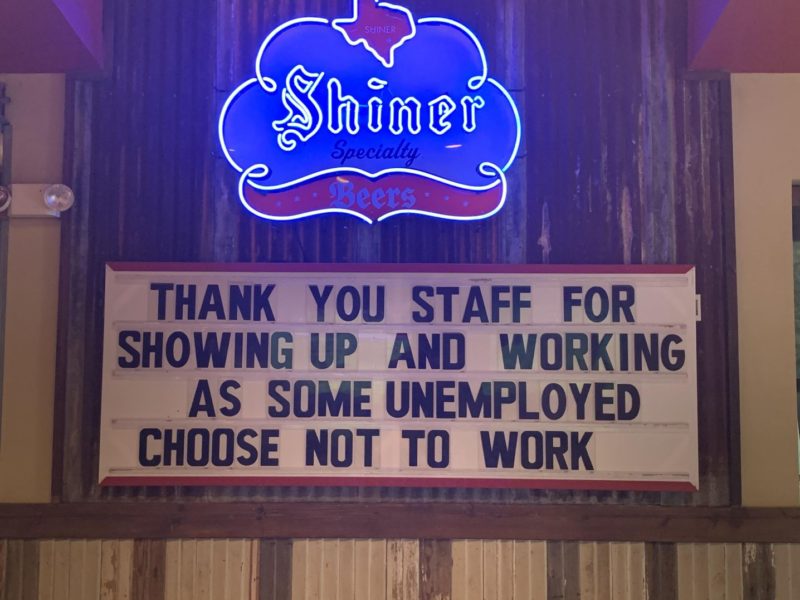Forecasters expected a blowout number from an April jobs report released this morning by the U.S. Labor Department. Like a starting gun at a race, it was supposed to show that the pace of hiring in the country had finally picked up, setting the economy off at a sprint.
But instead of the 1 million jobs that economists had forecast, the report showed that U.S. employers added only 266,000 jobs in April. To make matters worse, the Labor Department also revised downward its previously released March number, from 916,000 to 770,000.
“Well – no-one saw that coming,” said ING Chief Economist James Knightley, in a note to clients. “We knew friction was coming in hiring, but no one expected it would come so soon,” said Robert Frick, corporate economist at the Navy Federal Credit Union. “No single explanation or couple of explanations is apparent, but it looks to be a host of factors.”
But employers have been warning for months that they can’t find enough workers, including restaurants, factories, retailers, and transportation firms.
The unemployment rate actually rose in April, from 6% to 6.1%, according to the report. That’s in spite of manufacturing job openings surging 65% from pre-pandemic levels, construction openings surging 60%, and even retail openings now up more than 25%.
Some economists didn’t even believe that the latest jobs number could be accurate. Liberal economist Paul Krugman, a New York Times columnist, wrote, “When you get a data point that’s at odds with other information, it might — might! — be a data issue, not a real economic issue.”
But the U.S. Chamber of Commerce said the report was a clear sign that “paying people not to work is dampening what should be a stronger jobs market.”
Neil Bradley, Chief Policy Officer at the U.S. Chamber, said that “approximately 25% of unemployed are taking home more from unemployment than they made working.” He called on Congress to end the $300 weekly supplement to unemployment insurance.
“Companies are turning down work because they can’t fill open jobs,” Bradley added.
Other disincentives to work include generous stimulus checks, student loan forbearance, mortgage forbearance programs, and keeping schools closed in some parts of the country, which makes it harder for parents to get back into the workforce.
But the Biden administration rejected this interpretation of the data, saying that the report actually indicated that more government assistance was needed. “Quite frankly, we’re moving more rapidly than I thought we would,” President Biden said in televised remarks.
“Listening to commentators today, as I was getting dressed, you might think that we should be disappointed. But when we passed the American Rescue Plan, I want to remind everybody that it was designed to help us over the course of a year, not 60 days. Today there’s more evidence that our economy is moving in the right direction, but we have a long way to go.”
Biden’s Treasury Secretary Janet Yellen expressed optimism about a gradual recovery, saying that the U.S. “will reach full employment next year.”
